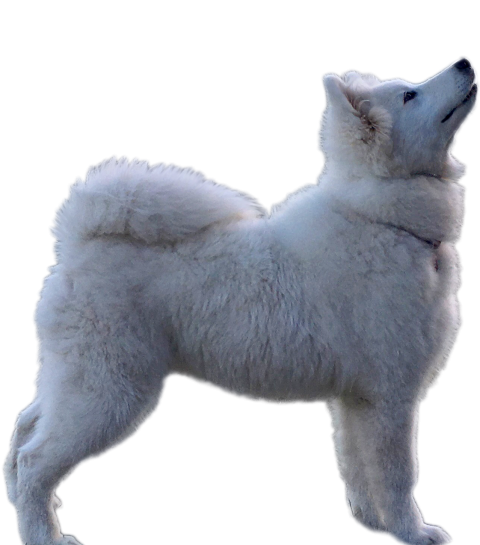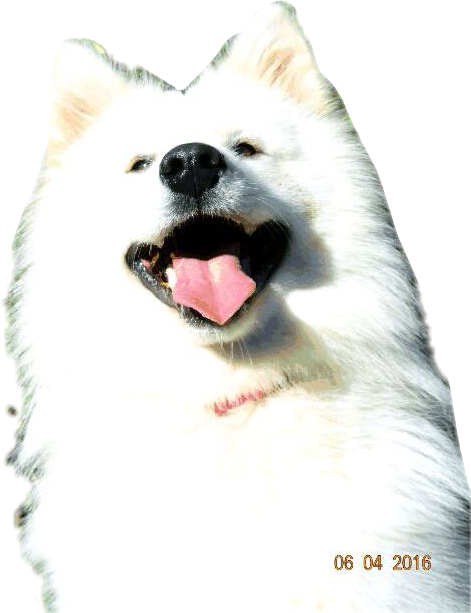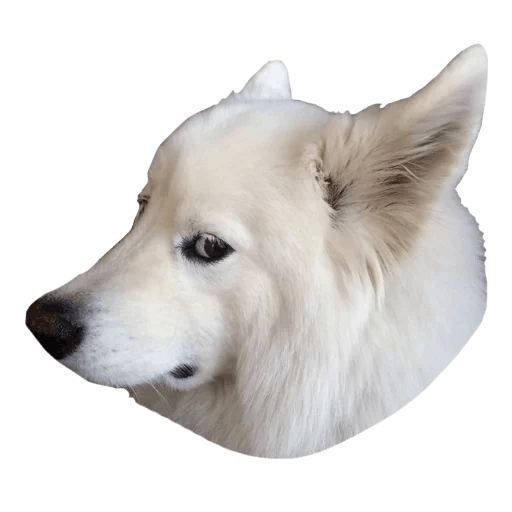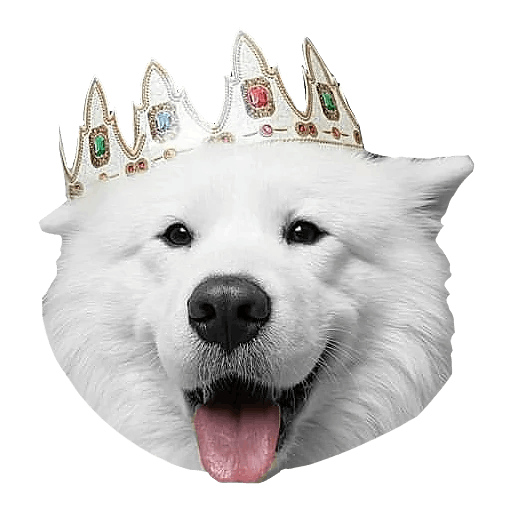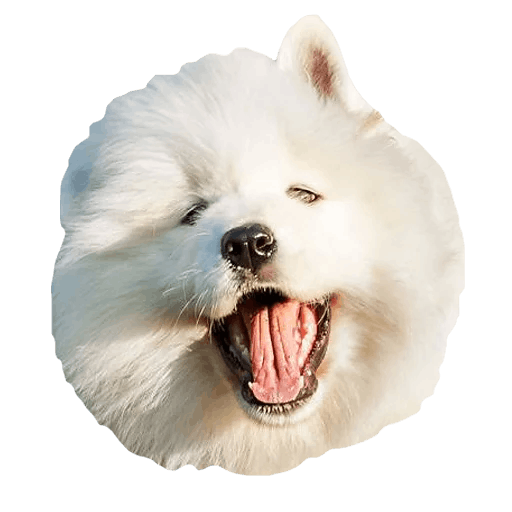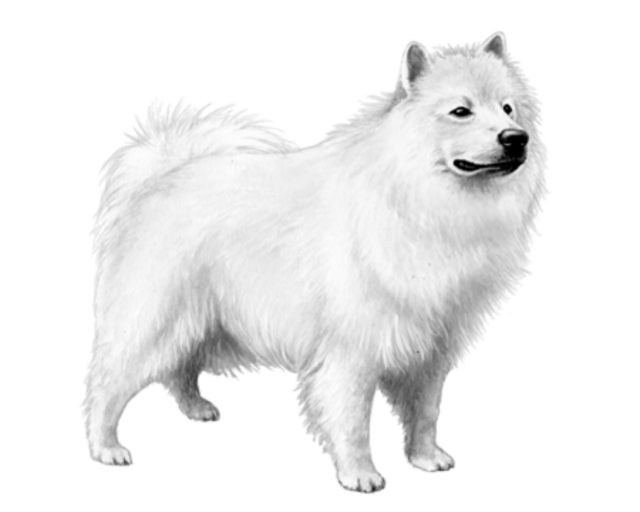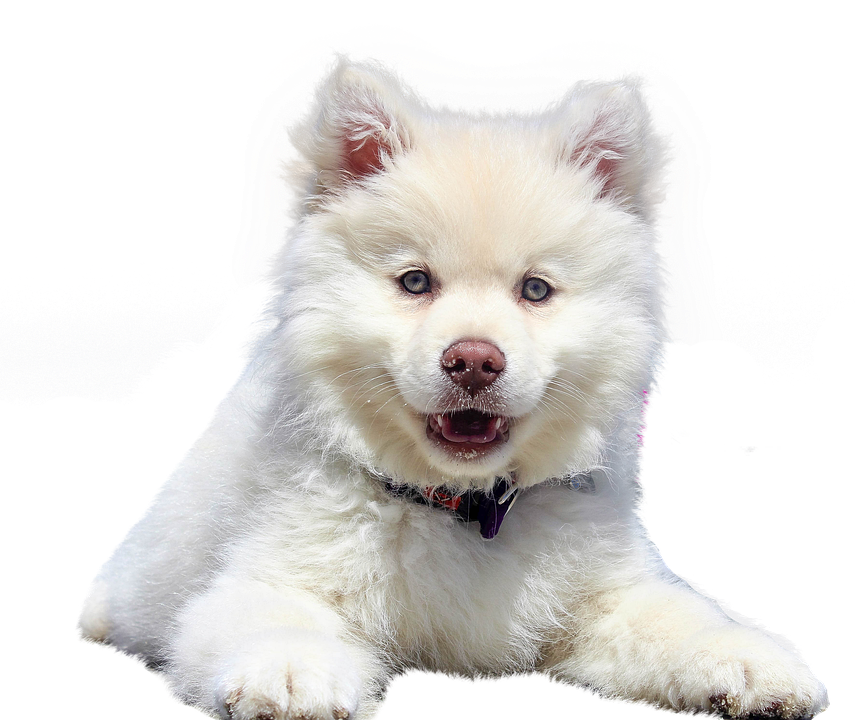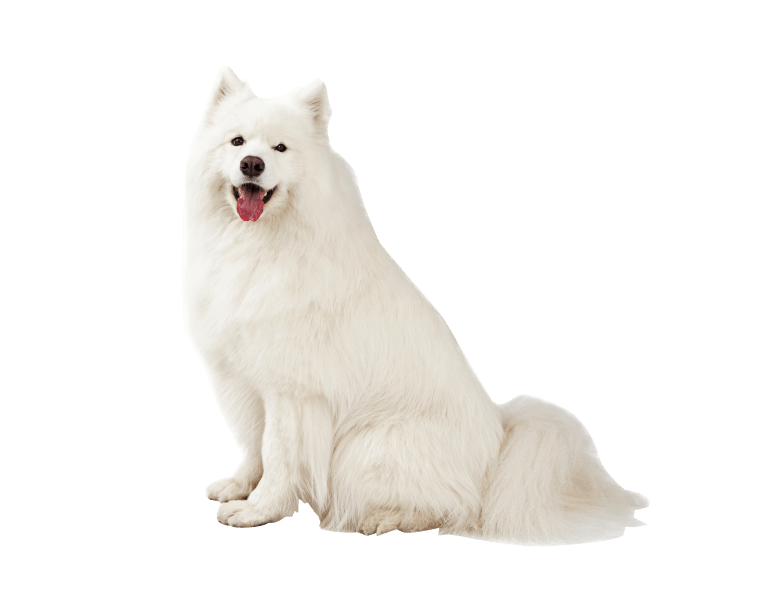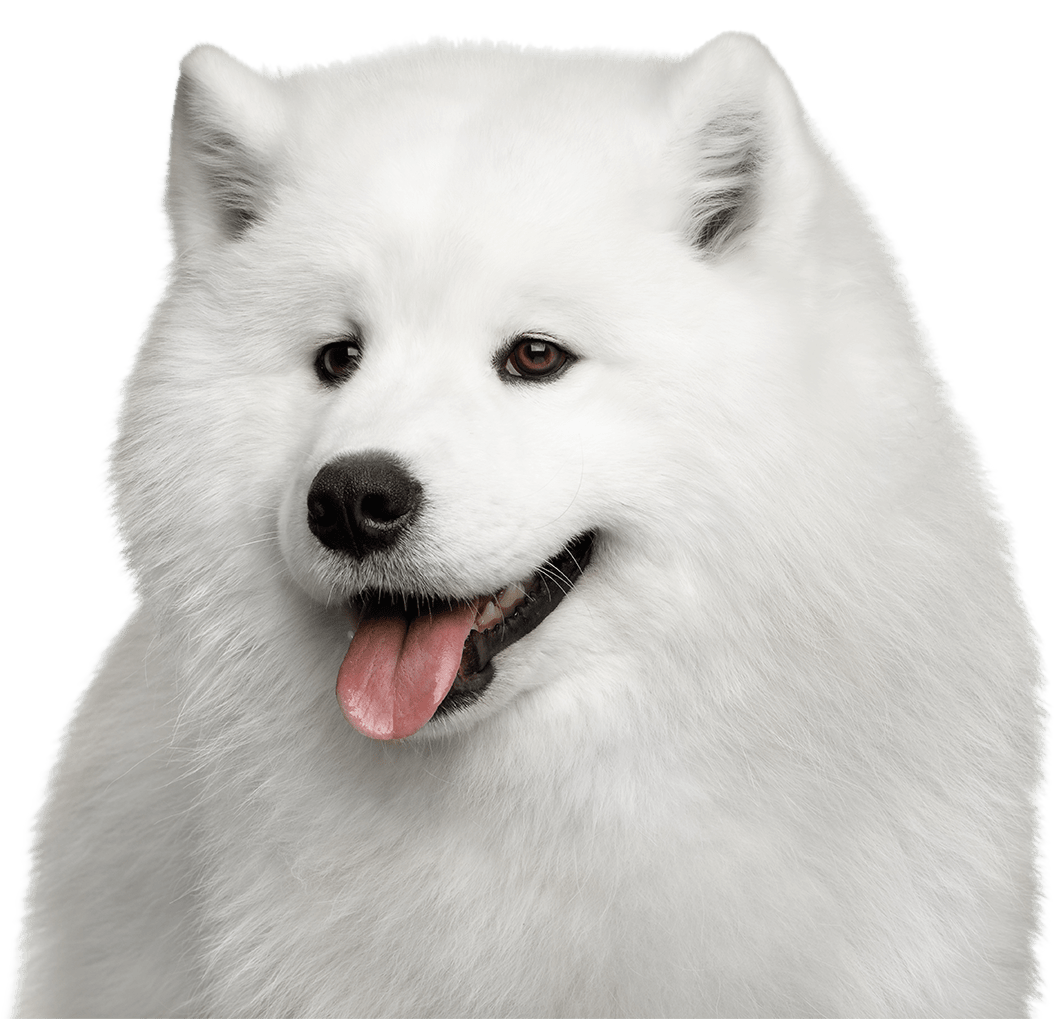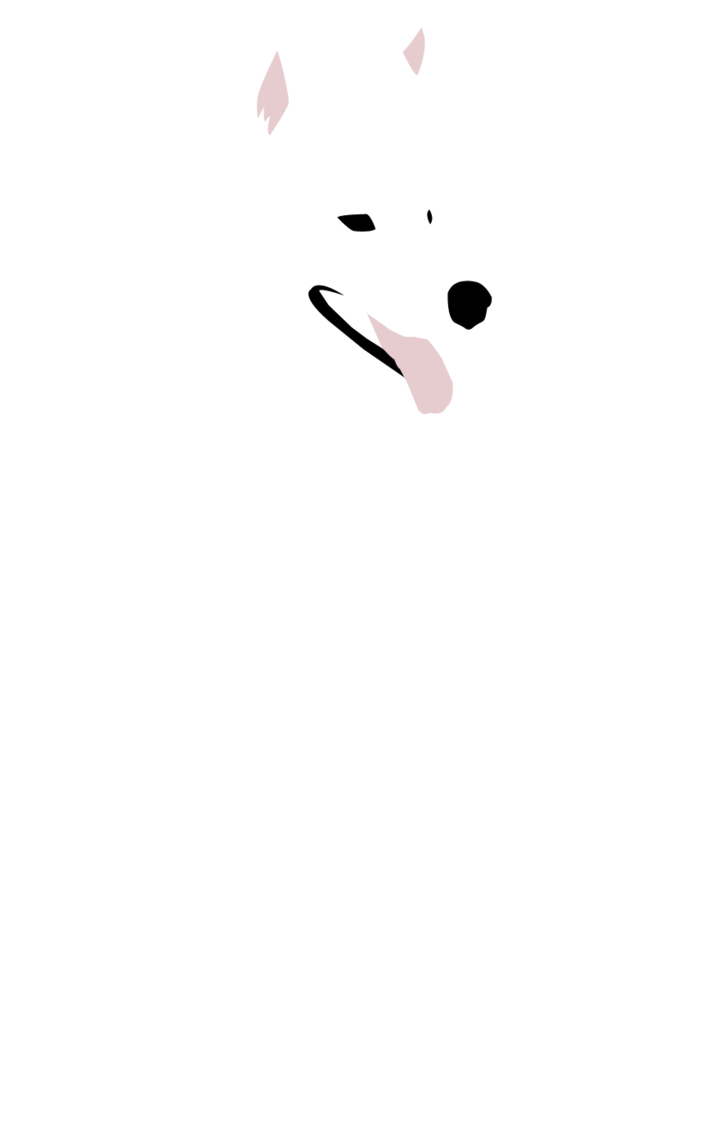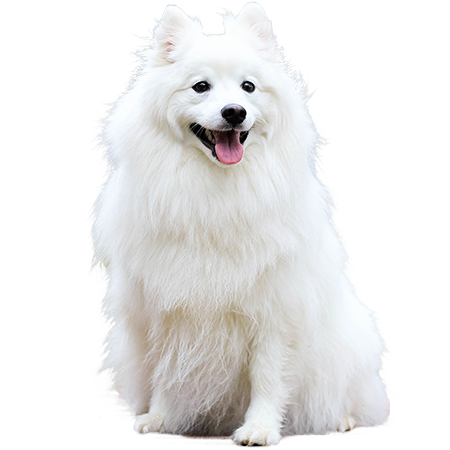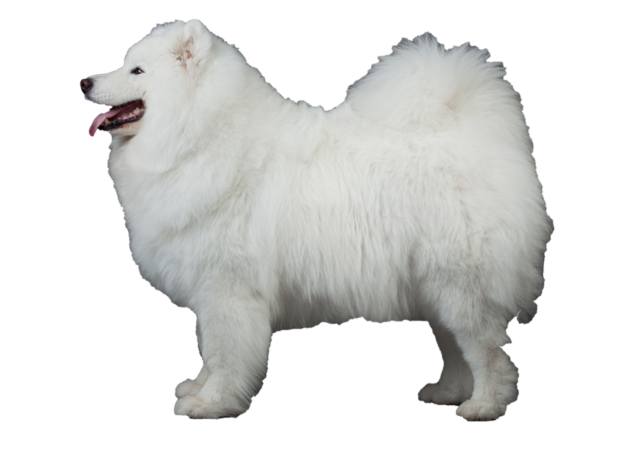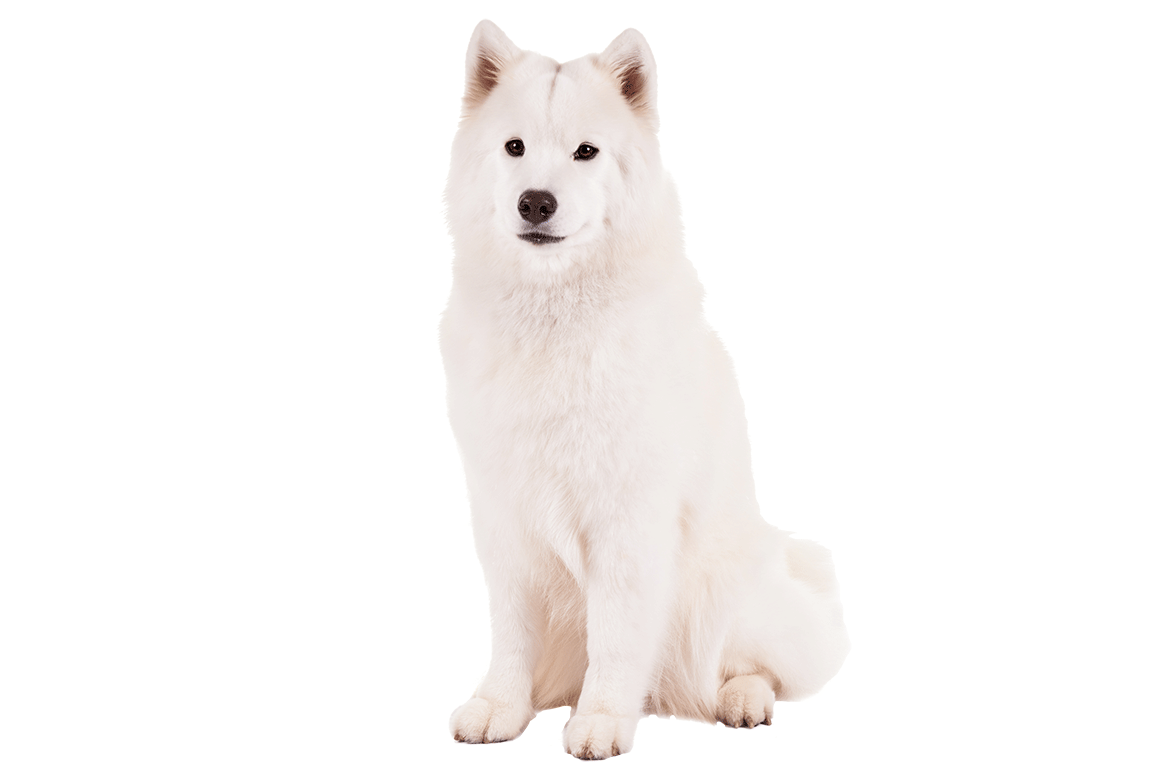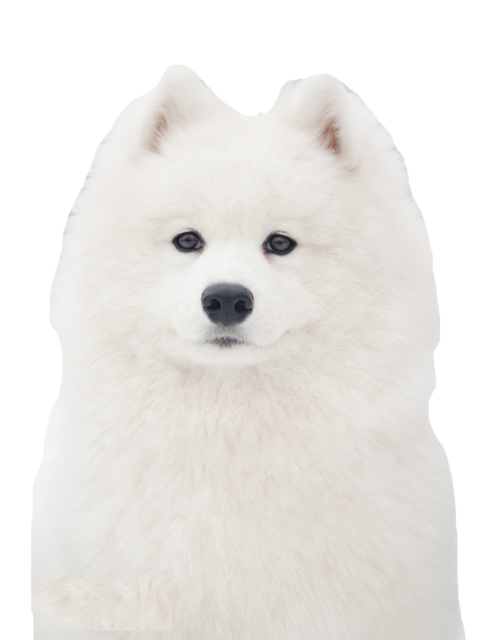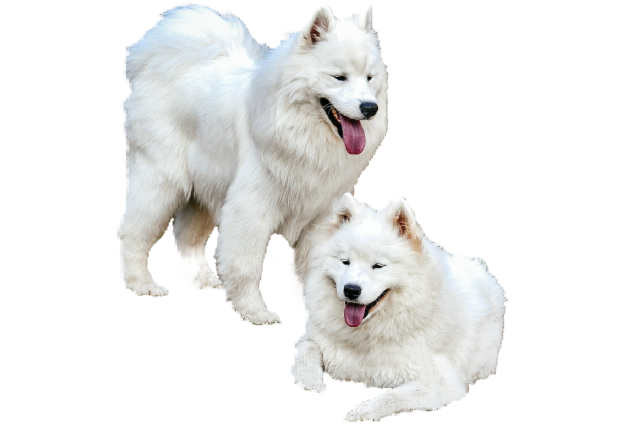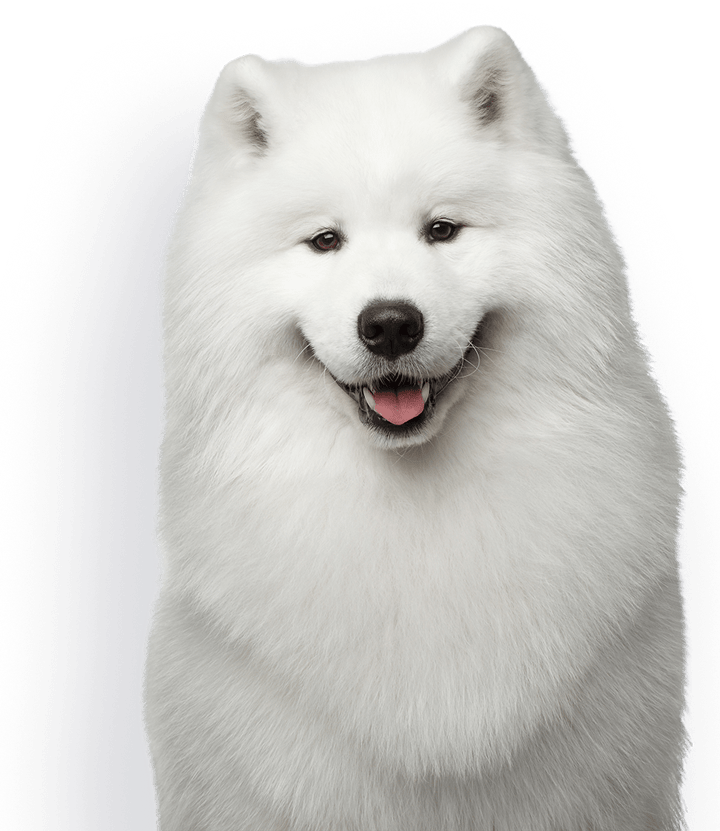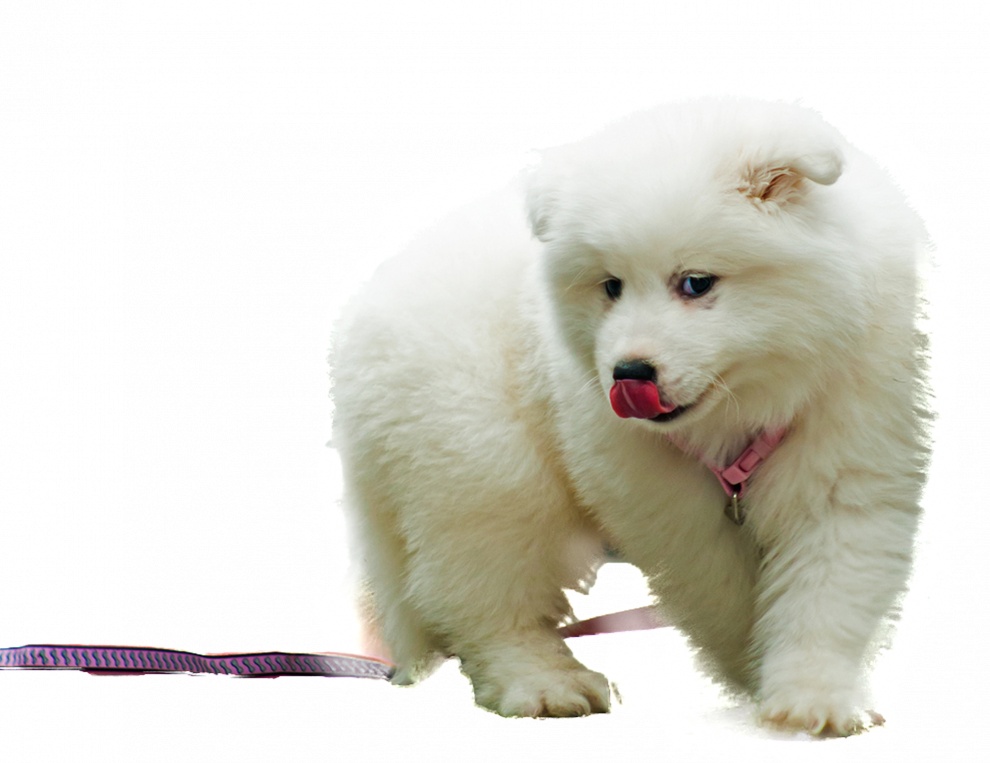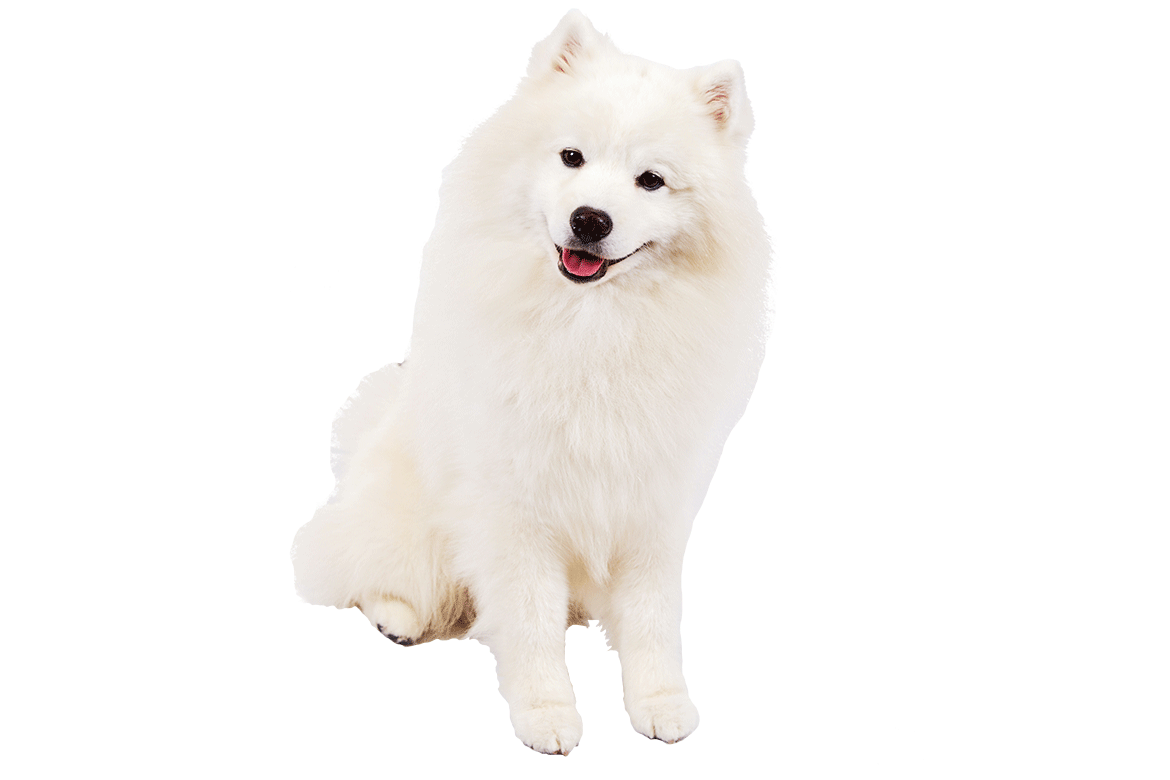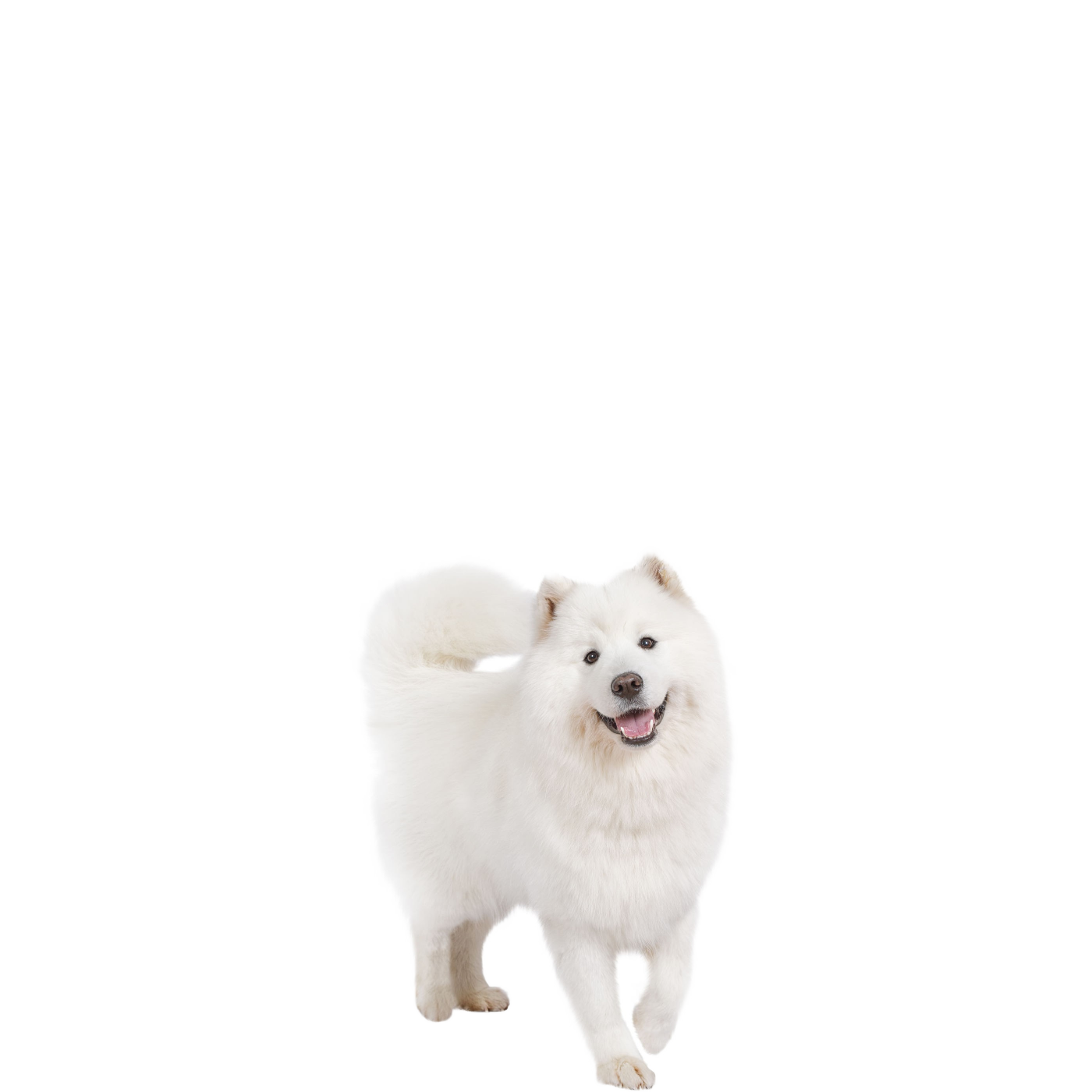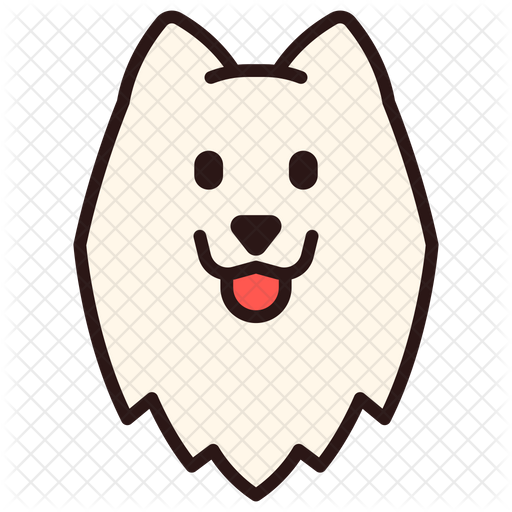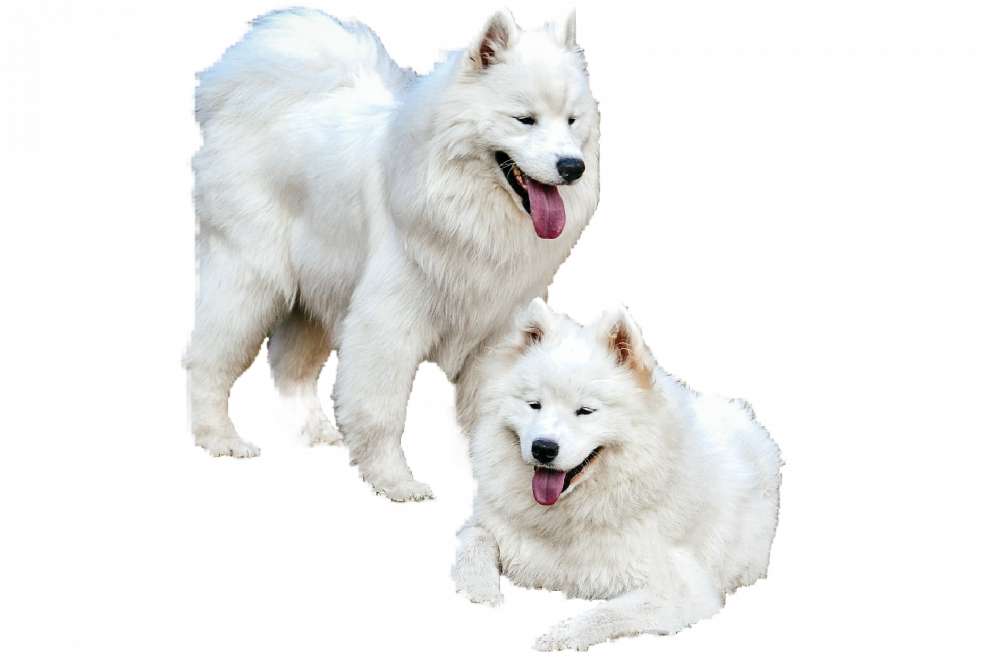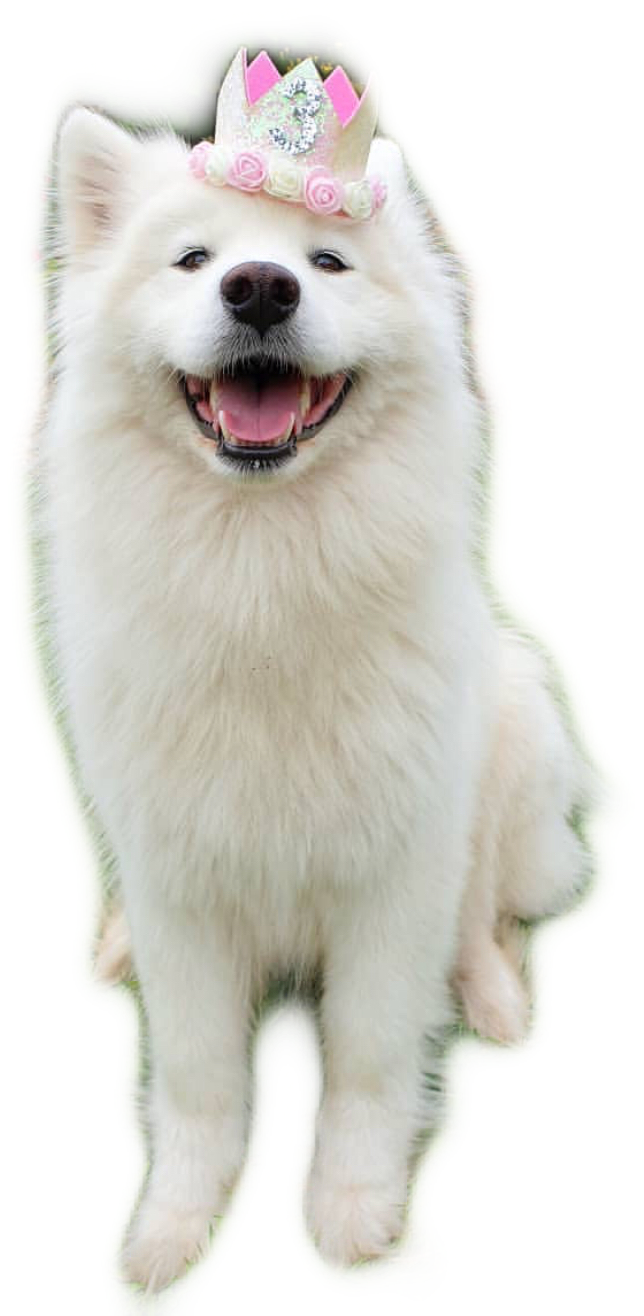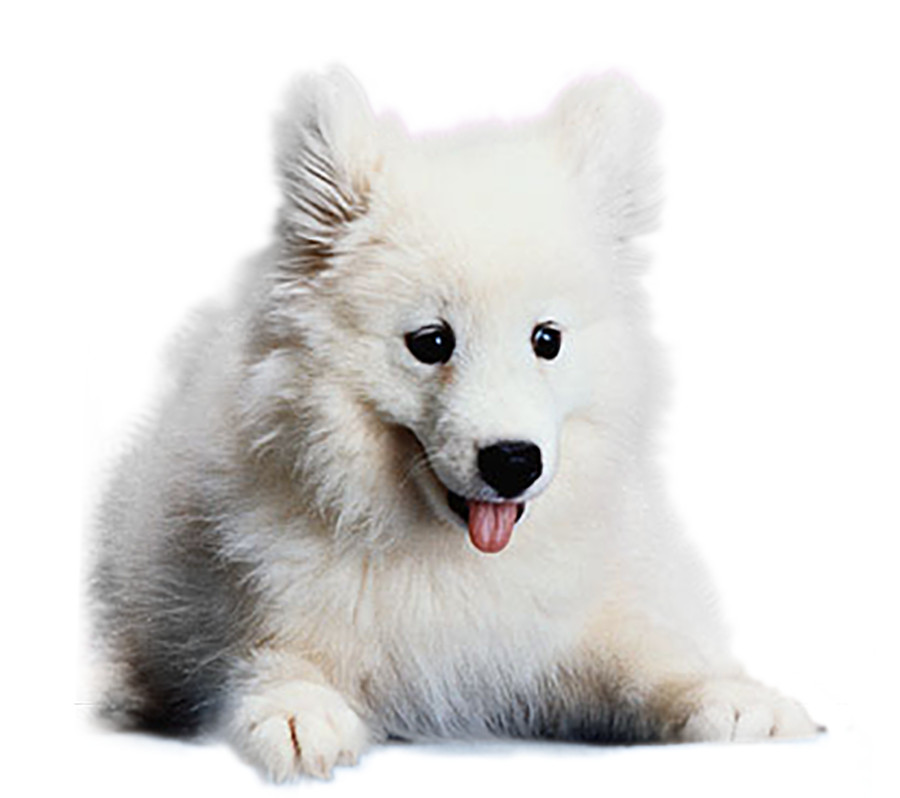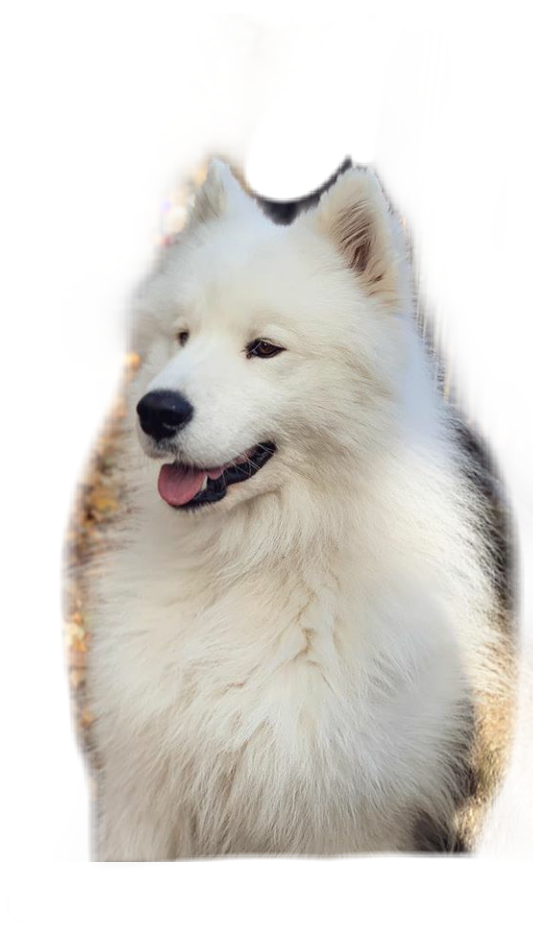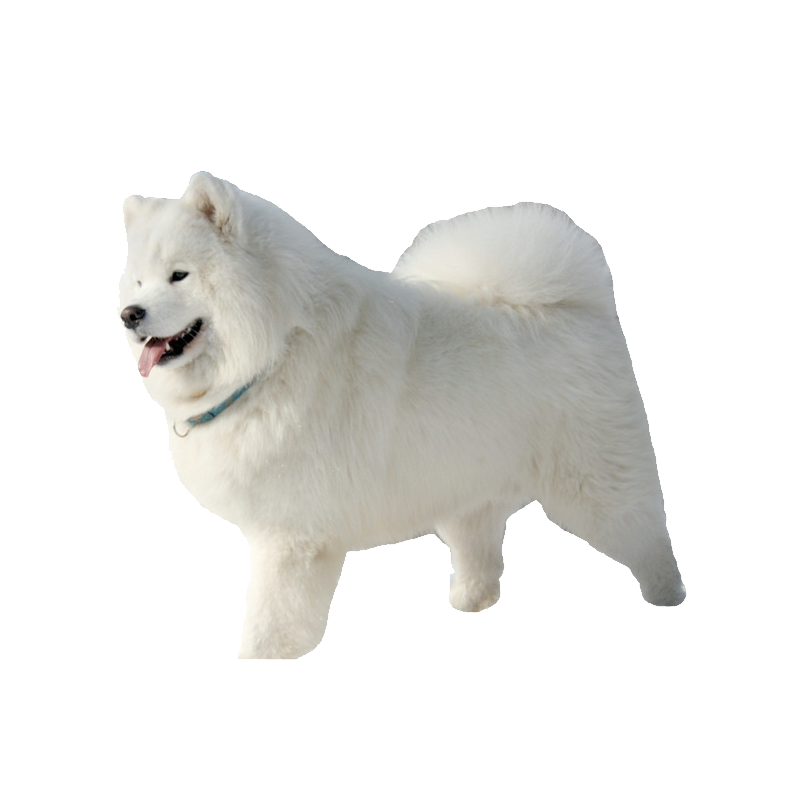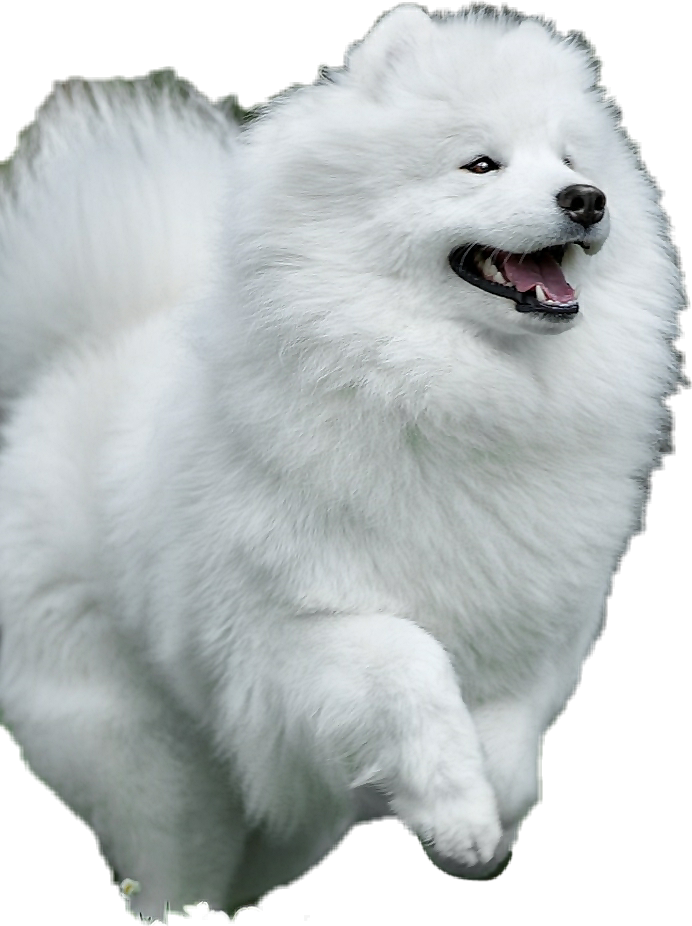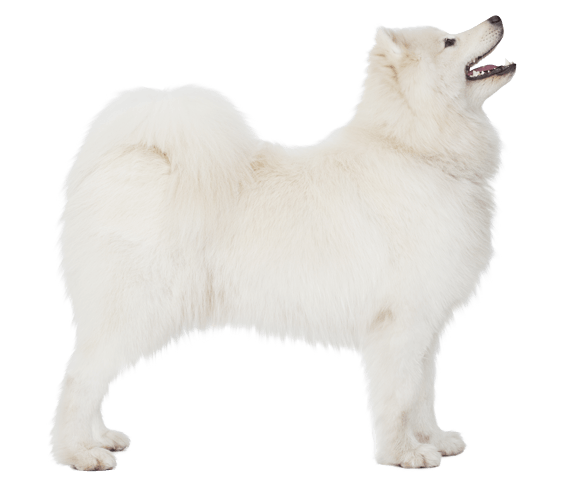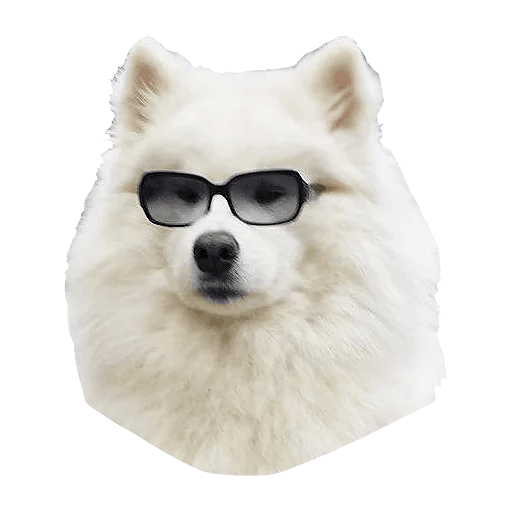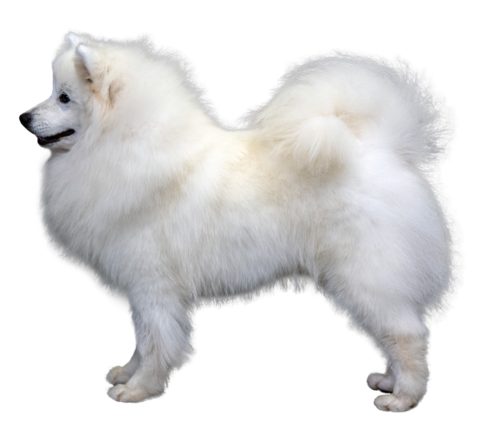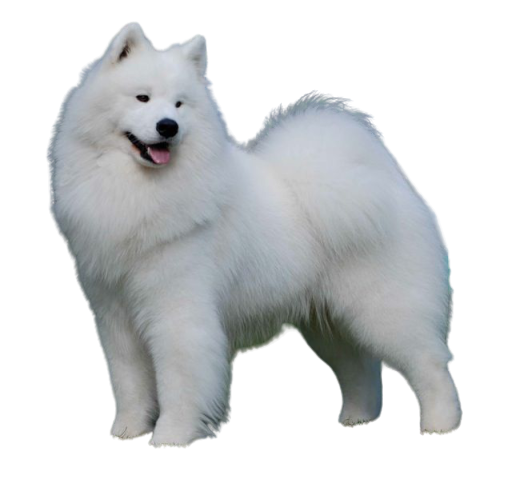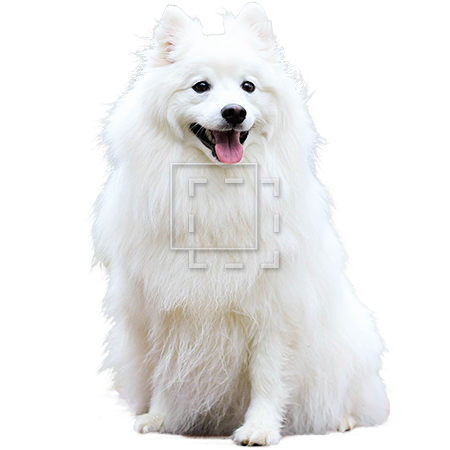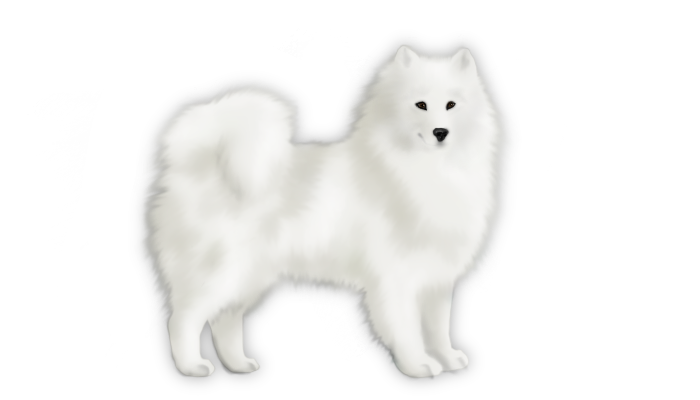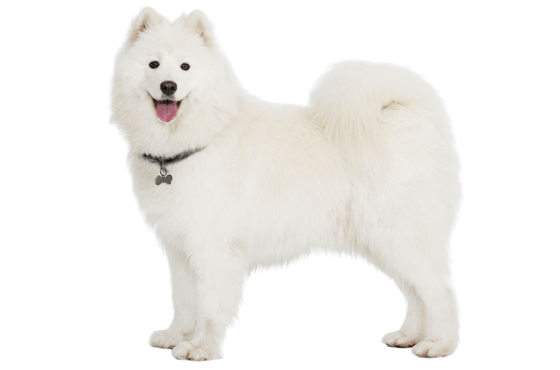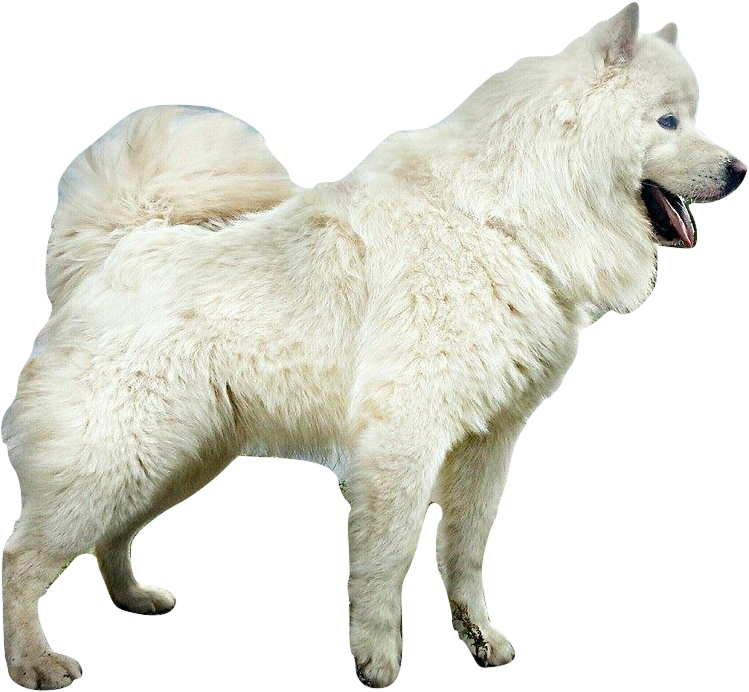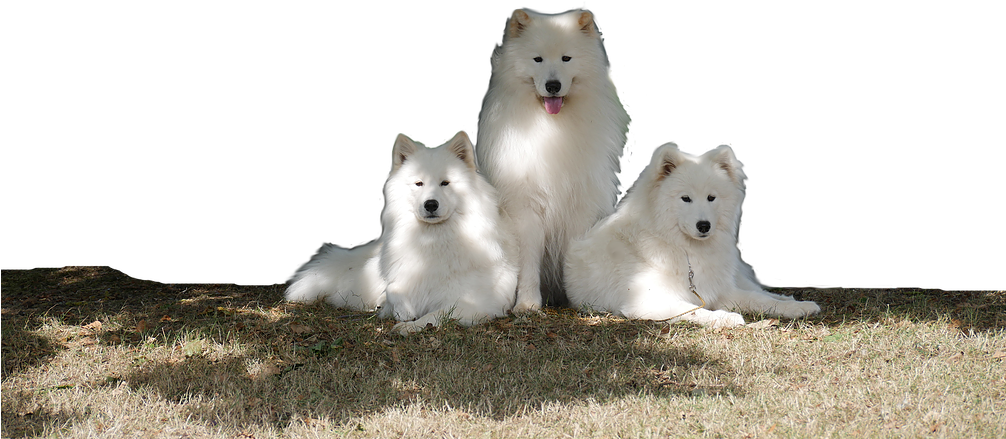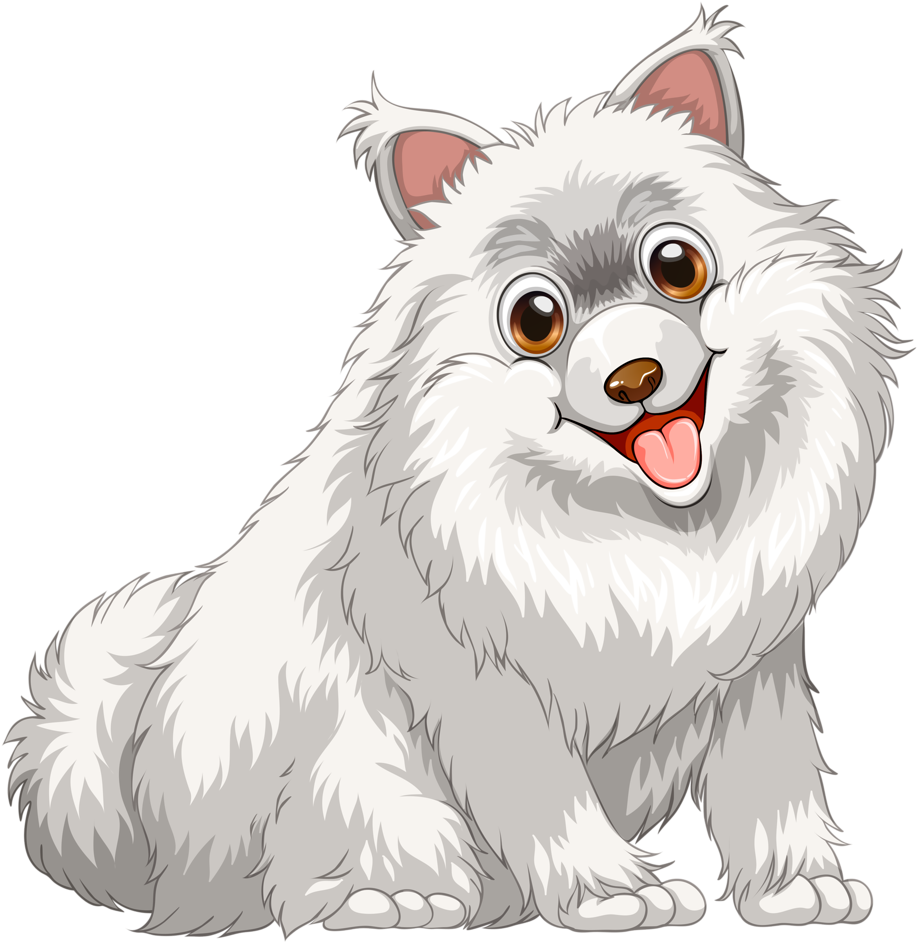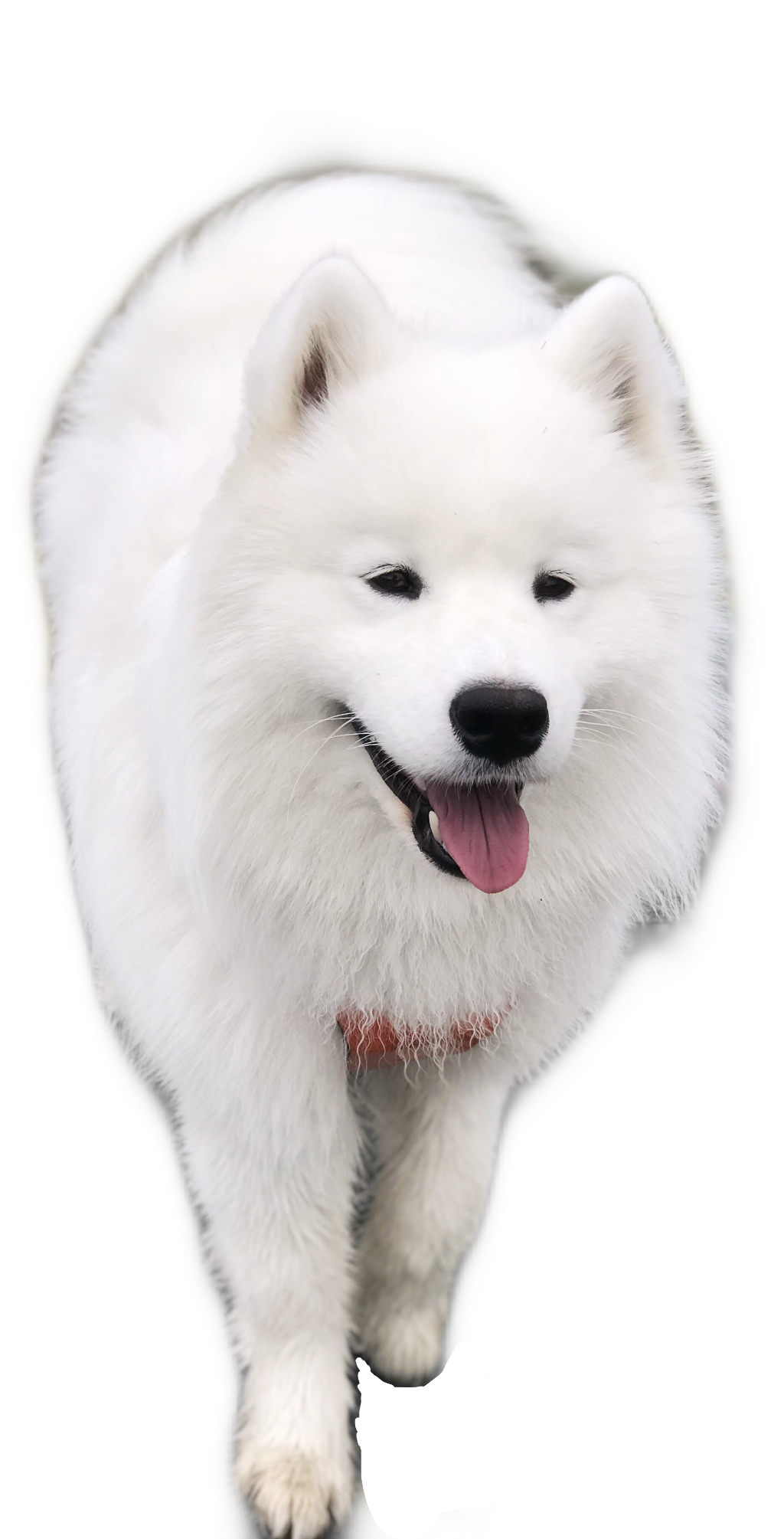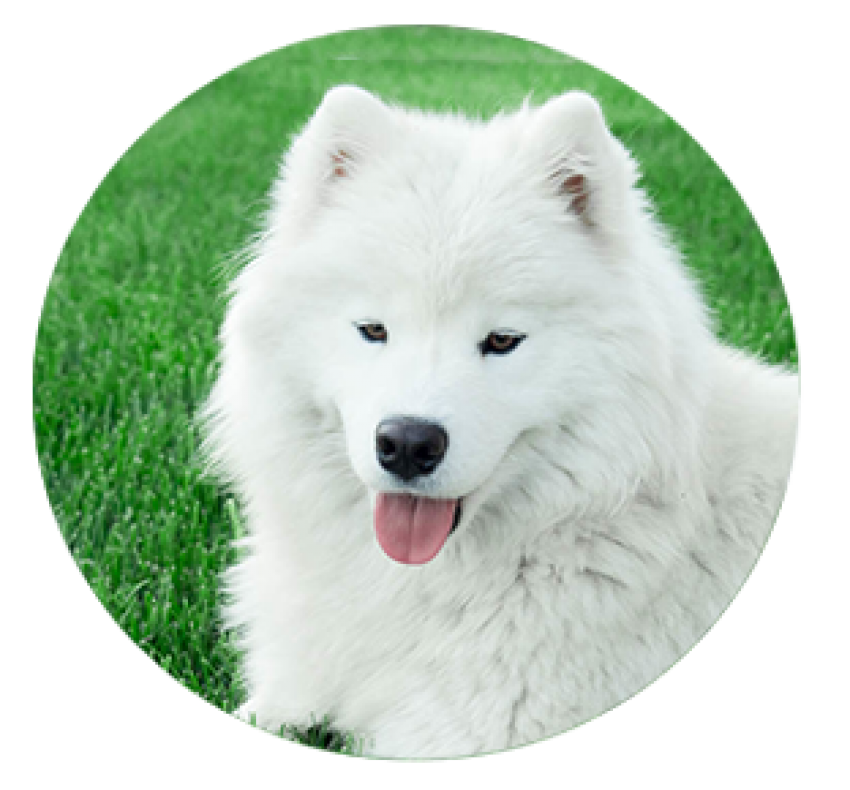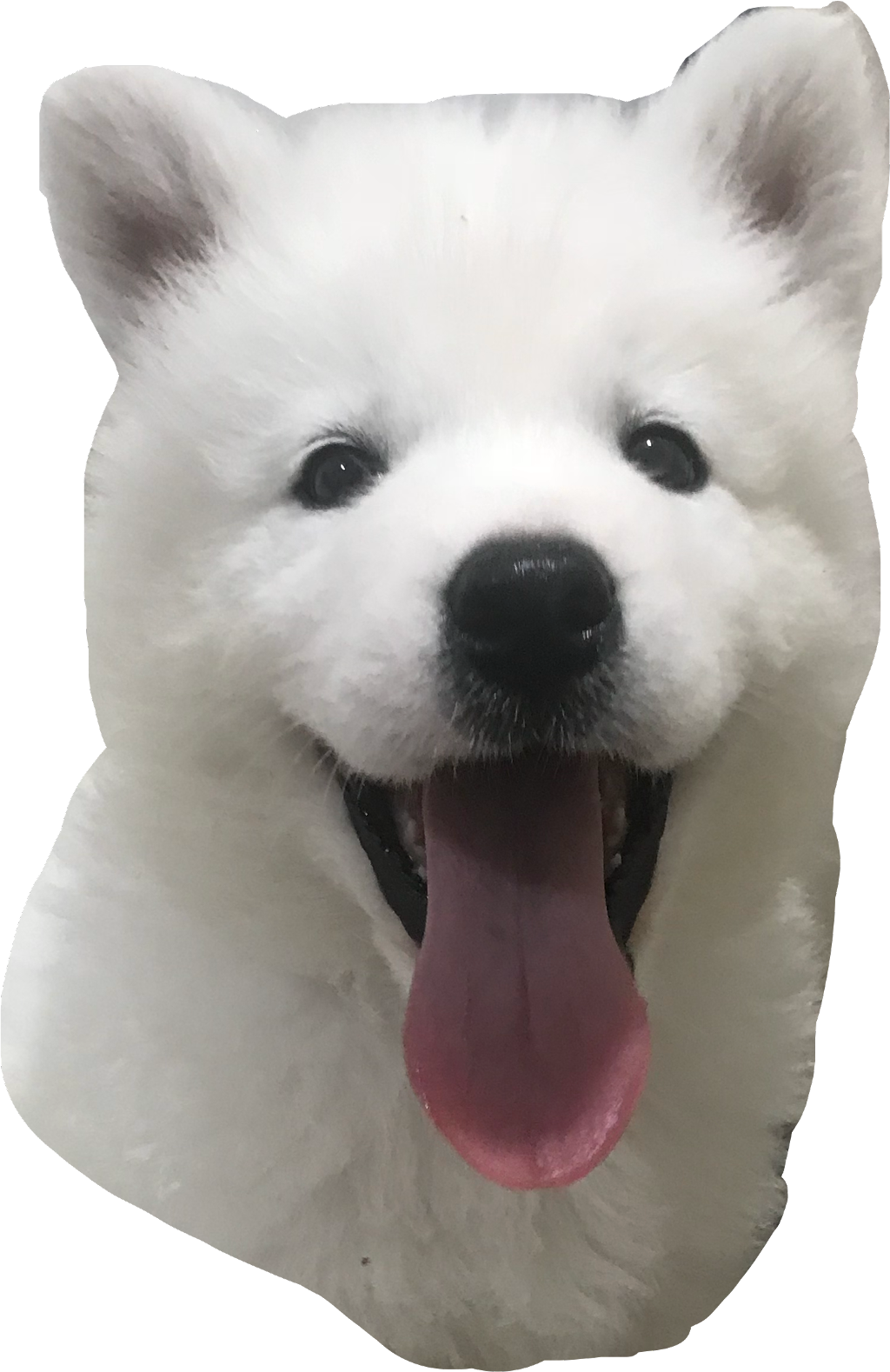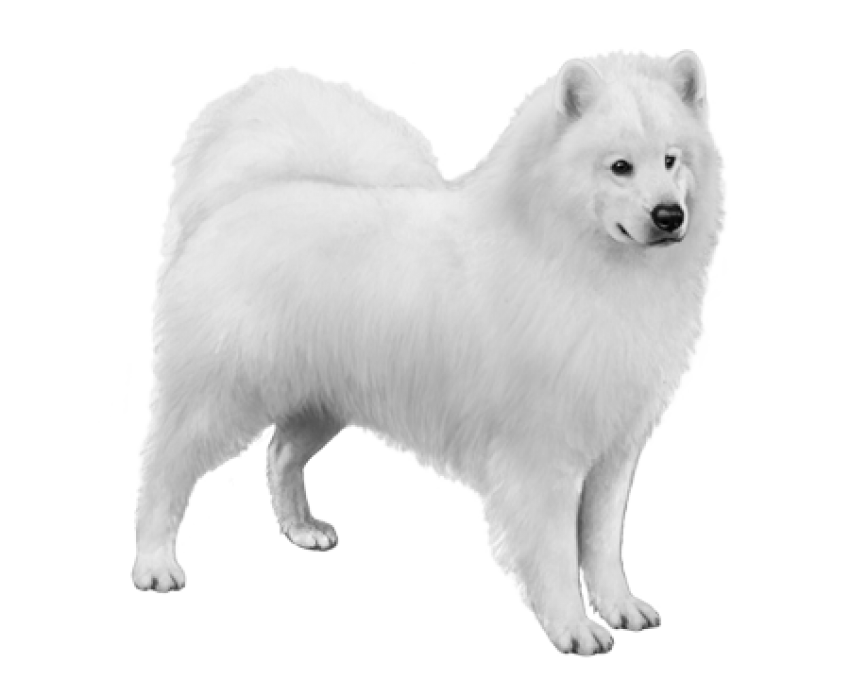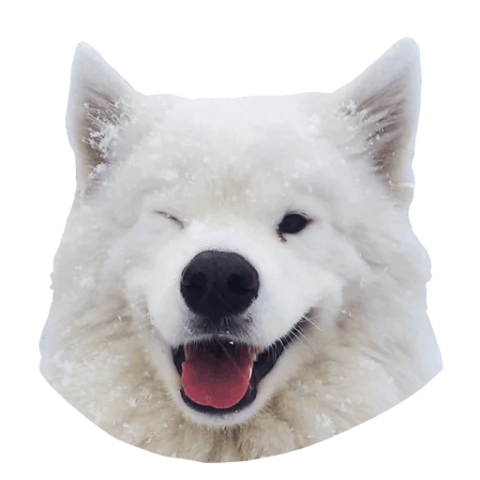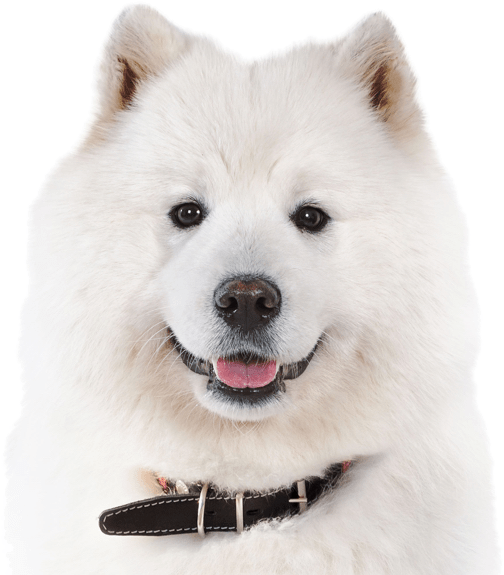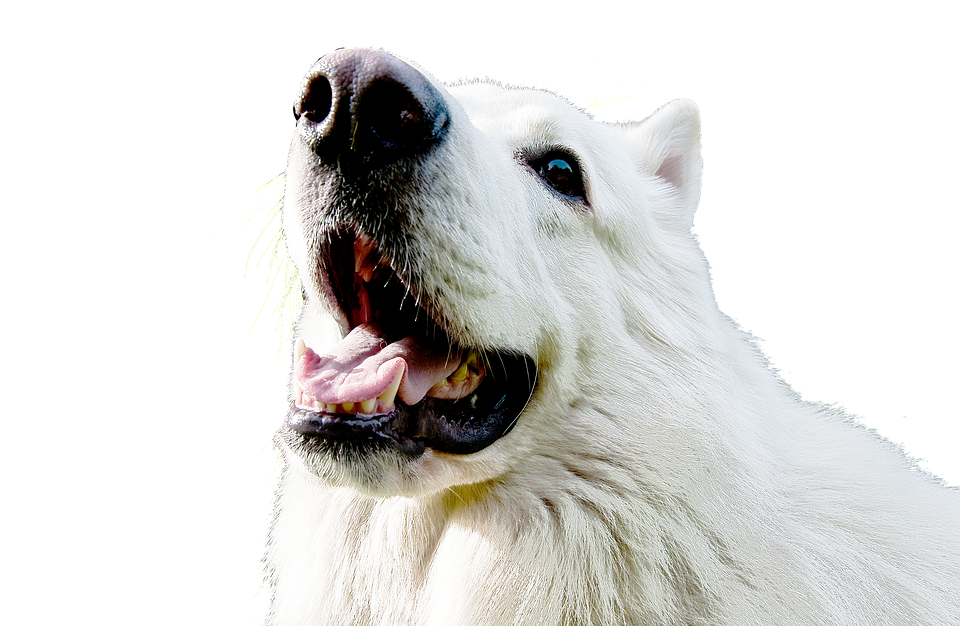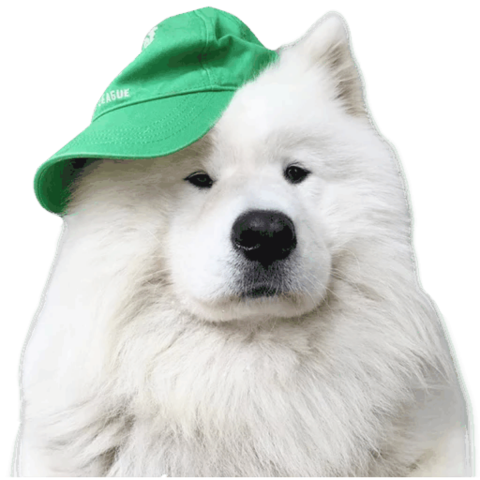Download top and best high-quality free Samoyed Dog PNG Transparent Images backgrounds available in various sizes. To view the full PNG size resolution click on any of the below image thumbnail.
License Info: Creative Commons 4.0 BY-NC
The Samoyed is a medium-sized herding dog with a double-layer coat that is thick and white. They are related to the spitz-type dog, the laika.
It is named after the Siberian Samoyedic people. The fluffy white canines were bred by these nomadic reindeer herders to aid in herding.
The Samoyed has been recognized as a primitive breed that predates the 19th century advent of current breeds. It is a member of the spitz or northern dog family, especially the laikas, a Eurasian dog breed used for hunting, herding, guarding, and sledding. The Samoyed is derived from the Nenets herding laika, a dog that comes in a range of colors in addition to white. The Samoyed, like many other breeds, was developed from a limited number of founders (in this case, from Siberia).
Samoyeds were initially employed by the Samoyede people of Siberia for hunting, herding reindeer, and dragging sledges.
Males must weigh 45″65 pounds (20″29 kg) and have a shoulder measurement of 21″23.5 inches (53″60 cm), while girls must weigh 35″50 pounds (16″23 kg) and have a shoulder measurement of 19″21 inches (48″53 cm). Males must be 51″56 centimetres (20″22 in) tall, while females must be 46″51 centimetres (18″20 in) tall, according to the UK Kennel Club Standard.
Samoyed eyes are almond-shaped and generally black or brown. Although blue or other colored eyes are possible, they are not permitted in the show ring. In its family, the Spitz, it belongs to the “brown and black part.”
Samoyed ears are thick and fur-covered, triangular in form, and stand upright. They are nearly generally white, but sometimes have a light to dark brown tint at the tips of the ears (known as “biscuit”).
One of the breed’s distinctive characteristics is the Samoyed tail. The Samoyed tail, like that of the Alaskan Malamute, is coiled over the back; however, unlike the Alaskan Malamute, the Samoyed tail actually touches the back. It is frequently carried laying over the back and to one side, rather than in a tight curl or held flag-like. Samoyeds may sleep with their tails over their noses to give extra warmth in chilly weather. When they are comfortable and at peace, such as when being stroked or feeding, almost all Samoyeds will let their tails droop, but when they are more attentive, they will curl them back up.
Samoyeds have a double-layered, thick coat. Long, coarse, and straight guard hairs seem white but with a tinge of silver colour in the topcoat. The undercoat is kept generally clean and clear of particles by this top layer. The undercoat, also known as the underlayer, is a thick, soft, and short layer of fur that keeps the dog warm. The undercoat usually loses significantly once or twice a year, and this seasonal process is known as “blowing coat.” This does not mean that the Samoyed will just shed during that period; fine hairs (as opposed to the thick clumps shed during seasonal shedding) shed all year and have a tendency to adhere to cloth and float in the air. Although pure white and all biscuit dogs are prevalent, the normal Samoyed may come in a blend of biscuit and white coloration. Males’ ruffs are generally greater than females’. While this breed is advertised as “hypoallergenic,” it does shed a lot and requires a lot of maintenance. While the breed may generate less allergens, severe allergies should be avoided.
Download Samoyed Dog PNG images transparent gallery
- Samoyed Dog Full Grown PNG Image
Resolution: 480 × 545
Size: 264 KB
Image Format: .png
Download
- Samoyed Dog Full Grown PNG Photo
Resolution: 986 × 288
Size: 288 KB
Image Format: .png
Download
- Samoyed Dog Full Grown PNG Cutout
Resolution: 471 × 613
Size: 346 KB
Image Format: .png
Download
- Samoyed Dog Full Grown PNG Images
Resolution: 512 × 512
Size: 63 KB
Image Format: .png
Download
- Samoyed Dog Full Grown PNG Photos
Resolution: 512 × 512
Size: 82 KB
Image Format: .png
Download
- Samoyed Dog Full Grown Transparent
Resolution: 512 × 512
Size: 68 KB
Image Format: .png
Download
- Samoyed Dog White
Resolution: 640 × 512
Size: 151 KB
Image Format: .png
Download
- Samoyed Dog White PNG
Resolution: 855 × 720
Size: 820 KB
Image Format: .png
Download
- Samoyed Dog White PNG Pic
Resolution: 768 × 615
Size: 187 KB
Image Format: .png
Download
- Samoyed Dog White PNG File
Resolution: 1059 × 1019
Size: 528 KB
Image Format: .png
Download
- Samoyed Dog White PNG Image
Resolution: 705 × 1134
Size: 45 KB
Image Format: .png
Download
- Samoyed Dog White PNG Photo
Resolution: 450 × 450
Size: 221 KB
Image Format: .png
Download
- Samoyed Dog White PNG Cutout
Resolution: 640 × 453
Size: 191 KB
Image Format: .png
Download
- Samoyed Dog White PNG Images
Resolution: 1170 × 780
Size: 259 KB
Image Format: .png
Download
- Samoyed Dog White PNG Photos
Resolution: 480 × 640
Size: 252 KB
Image Format: .png
Download
- Samoyed Dog White Transparent
Resolution: 640 × 427
Size: 208 KB
Image Format: .png
Download
- Samoyed Dog White PNG Clipart
Resolution: 720 × 831
Size: 303 KB
Image Format: .png
Download
- Samoyed Dog
Resolution: 990 × 763
Size: 721 KB
Image Format: .png
Download
- Samoyed Dog PNG
Resolution: 1170 × 780
Size: 128 KB
Image Format: .png
Download
- Samoyed Dog PNG Pic
Resolution: 1400 × 1400
Size: 317 KB
Image Format: .png
Download
- Samoyed Dog PNG File
Resolution: 512 × 512
Size: 117 KB
Image Format: .png
Download
- Samoyed Dog PNG Image
Resolution: 990 × 660
Size: 497 KB
Image Format: .png
Download
- Samoyed Dog PNG Photo
Resolution: 644 × 1316
Size: 1255 KB
Image Format: .png
Download
- Samoyed Dog PNG Cutout
Resolution: 900 × 798
Size: 530 KB
Image Format: .png
Download
- Samoyed Dog PNG Images
Resolution: 533 × 926
Size: 511 KB
Image Format: .png
Download
- Samoyed Dog PNG Photos
Resolution: 800 × 799
Size: 228 KB
Image Format: .png
Download
- Samoyed Dog Transparent
Resolution: 692 × 926
Size: 606 KB
Image Format: .png
Download
- Samoyed Dog PNG Clipart
Resolution: 567 × 489
Size: 97 KB
Image Format: .png
Download
- Samoyed Dog PNG Picture
Resolution: 512 × 512
Size: 56 KB
Image Format: .png
Download
- Samoyed Dog PNG HD Image
Resolution: 480 × 433
Size: 289 KB
Image Format: .png
Download
- Samoyed Dog PNG Image HD
Resolution: 512 × 487
Size: 161 KB
Image Format: .png
Download
- Samoyed Dog No Background
Resolution: 450 × 450
Size: 222 KB
Image Format: .png
Download
- Samoyed Dog PNG Images HD
Resolution: 700 × 400
Size: 173 KB
Image Format: .png
Download
- Samoyed Dog PNG Free Image
Resolution: 560 × 370
Size: 68 KB
Image Format: .png
Download
- Samoyed Dog PNG Image File
Resolution: 512 × 512
Size: 220 KB
Image Format: .png
Download
- Samoyed Dog Full Grown
Resolution: 749 × 692
Size: 674 KB
Image Format: .png
Download
- Samoyed Dog Full Grown PNG Clipart
Resolution: 1006 × 439
Size: 680 KB
Image Format: .png
Download
- Samoyed Dog Full Grown PNG Picture
Resolution: 917 × 942
Size: 351 KB
Image Format: .png
Download
- Samoyed Dog Full Grown PNG HD Image
Resolution: 1024 × 2009
Size: 2482 KB
Image Format: .png
Download
- Samoyed Dog Full Grown PNG Image HD
Resolution: 850 × 790
Size: 402 KB
Image Format: .png
Download
- Samoyed Dog Full Grown No Background
Resolution: 1024 × 1578
Size: 1898 KB
Image Format: .png
Download
- Samoyed Dog Full Grown PNG Images HD
Resolution: 850 × 680
Size: 173 KB
Image Format: .png
Download
- Samoyed Dog Full Grown PNG Free Image
Resolution: 641 × 649
Size: 157 KB
Image Format: .png
Download
- Samoyed Dog Full Grown PNG Image File
Resolution: 480 × 480
Size: 192 KB
Image Format: .png
Download
- Samoyed Dog Full Grown PNG
Resolution: 504 × 575
Size: 208 KB
Image Format: .png
Download
- Samoyed Dog Full Grown PNG Pic
Resolution: 960 × 626
Size: 748 KB
Image Format: .png
Download
- Samoyed Dog Full Grown PNG File
Resolution: 480 × 480
Size: 270 KB
Image Format: .png
Download
